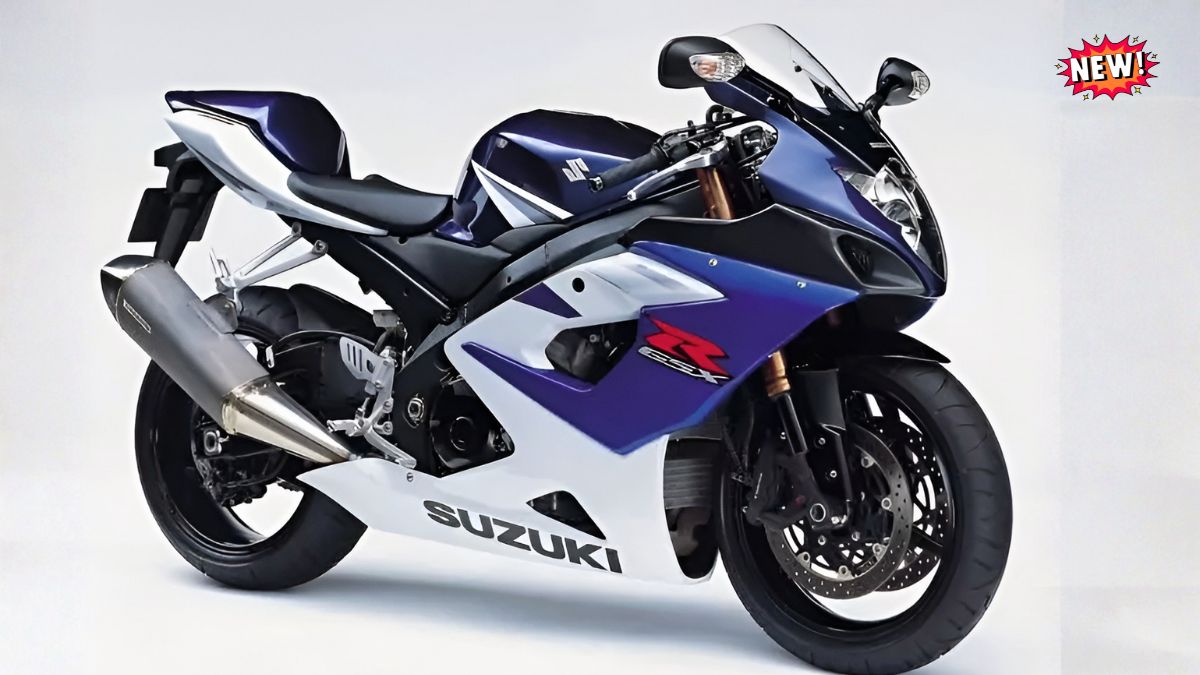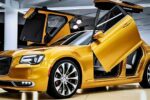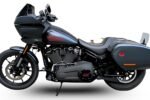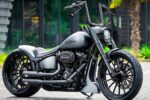Join on WhatsApp
Get the latest updates directly on WhatsApp – motivation, news & more!
The Suzuki GSX-R1000 K5/K6 is widely regarded as one of the greatest superbikes ever built. Produced during 2005–2006, it became a benchmark for power, balance, and reliability—earning its place in motorcycle history. Even today, riders talk about the K5/K6 with the same respect reserved for legends.
Suzuki completely redesigned the GSX-R1000 for 2005, creating a machine that was lighter, more powerful, and sharper than anything before it. It was so good that it dominated racing grids and road tests alike. Many enthusiasts still call it the “last true analogue superbike”, built before electronics started taking over.
When the Suzuki GSX-R1000 K5/K6 Arrived and What Made It Special
The K5 (2005) and K6 (2006) versions arrived at a time when the superbike wars were at their peak. Yamaha had its R1, Kawasaki had the ZX-10R, and Honda was pushing the Fireblade—but Suzuki raised the bar.
With a 999cc inline-four engine producing around 178 horsepower and weighing just 166 kg dry, the power-to-weight ratio was incredible for its time. It didn’t just accelerate fast—it delivered its power smoothly and predictably, giving riders immense confidence.
The K5/K6 was also the first GSX-R1000 with a longer wheelbase and compact engine design, making it incredibly stable at high speeds without sacrificing agility. It quickly became the weapon of choice for track riders and private racers across the world.
How the Suzuki GSX-R1000 K5/K6 Performs – Power, Handling & Ride Explained
The GSX-R1000 K5/K6 is powered by a 999cc, DOHC, 16-valve inline-four engine. What makes this motor so special is its broad torque curve—it pulls hard from low RPM and keeps going right to the redline.
| Specification | Details |
|---|---|
| Engine | 999cc inline-4, liquid-cooled |
| Power | 178 hp @ 12,000 rpm |
| Torque | 117 Nm @ 10,000 rpm |
| Transmission | 6-speed |
| Dry Weight | 166 kg |
| Top Speed | ~186 mph (299 km/h, electronically limited) |
The handling was equally impressive. Thanks to a new frame and swingarm design, the K5/K6 felt light and predictable in corners. The Showa suspension setup—fully adjustable front and rear—allowed riders to fine-tune their setup for track or road.
On the road, it was surprisingly comfortable for a superbike. The throttle response was crisp but not twitchy, and the ergonomics struck a good balance between aggressive and manageable. It had raw, mechanical feel—no traction control, no ride-by-wire—just rider skill and mechanical perfection.
Understanding the Design and Engineering Behind the K5/K6
Suzuki’s engineers made smart choices when designing the K5/K6. Instead of chasing minimal size, they built an engine that was compact but not cramped, allowing better airflow and cooling. The result was a more durable, reliable machine that handled heat and abuse with ease.
The twin-spar aluminum frame provided rigidity without weight, while the radial-mounted front brakes delivered sharp stopping power. The aerodynamics were optimized for top-end speed and stability—something that riders instantly appreciated during fast runs.
Visually, the K5/K6 was muscular yet sleek, with its twin-headlamp design and sharp tail section still turning heads today. It had that unmistakable “Gixxer” stance—low, aggressive, and ready to attack.
Best Features of the Suzuki GSX-R1000 K5/K6 – Explained Briefly
| Feature | Description | Why It Stands Out |
|---|---|---|
| Engine | 999cc inline-four | Smooth, reliable, and brutally fast |
| Power-to-Weight Ratio | 178 hp / 166 kg | Still impressive by modern standards |
| Suspension | Fully adjustable Showa | Perfect for track and road balance |
| Brakes | Radial-mounted calipers | Excellent feel and stopping power |
| Design | Aerodynamic and purposeful | Iconic look, timeless appeal |
These features combined to create a motorcycle that was as thrilling on the racetrack as it was dependable for everyday riders.
Why the Suzuki GSX-R1000 K5/K6 Is Still Considered Legendary
Nearly two decades later, the K5/K6 is still celebrated as one of the purest superbikes ever made. It was fast, light, durable, and easy to ride fast—qualities that made it a favorite among racers and enthusiasts alike.
The engine is so well-engineered that it’s still used as a base for some custom racing builds today. Many riders consider it the “golden era” Gixxer, before electronics and emissions rules started softening the edges of modern superbikes.
Its mix of power, balance, and reliability means clean, well-kept examples still fetch strong resale values—and are often labeled as future classics.
Pros and Cons of the Suzuki GSX-R1000 K5/K6
| Pros | Cons |
|---|---|
| Incredibly powerful yet smooth engine | No traction control or modern electronics |
| Lightweight and agile chassis | Can feel aggressive for new riders |
| Excellent reliability record | Older suspension by today’s standards |
| Classic design and timeless looks | Increasingly hard to find pristine examples |
The pros heavily outweigh the cons for experienced riders who appreciate mechanical purity and raw performance.
Conclusion
The Suzuki GSX-R1000 K5/K6 wasn’t just another superbike—it was a milestone in motorcycle history. With its near-perfect balance of power, agility, and reliability, it set a benchmark that’s still hard to match.
Even today, it’s a machine that commands respect. Whether you’re riding it, restoring it, or just admiring it, the K5/K6 represents everything that made sportbikes from the mid-2000s so unforgettable—pure, unfiltered performance driven by passion and precision.




